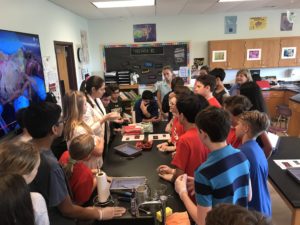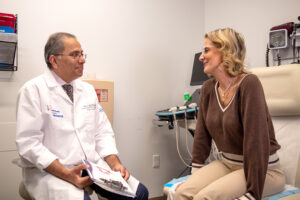
Teacher Jessica Loprieno created a hands-on experience for her seventh graders in the form of a crayfish dissection, explaining, “…crayfish …can be sustainably harvested and instead of super sharp knives or scalpels, medical scissors …[are] much safer…”
Students came into a classroom set up with trays of crayfish and scissors, gloves, and blunt dissecting probes (small metal sticks), then went to work in groups of two or three.
They located the cephalothorax, head, carapace, and abdomen; cut and then gently pulled away the exoskeleton; and identified the abdomen, intestines, heart, mouth, stomach, and nerve cord.
Loprieno said, “Dissections are a great way to bring animal structures to life for students.”






